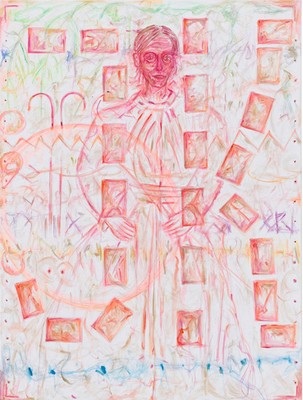Something Over Something Else: Romare Bearden’s Profile Series
Cincinnati Art Museum
February 28 – May 24, 2020
Cincinnati Art Museum
953 Eden Park Drive | Cincinnati, OH 45202
cincinnatiartmuseum.org
Cincinnati Art Museum
February 28 – May 24, 2020
The Cincinnati Art Museum will present “Something Over Something Else”: Romare Bearden’s Profile Series, an exhibition that brings together more than 30 works from Romare Bearden’s trailblazing series for the first time since its debut nearly 40 years ago.
The Cincinnati Art Museum is one of only two museums to display the exhibition, which opened at the High Museum of Art in Atlanta on September 14, 2019 and will be on view until February 2, 2020.
The pieces in Something Over Something Else appear in a chronological sequence, each accompanied by a title and short text written by Romare Bearden for the original exhibitions of this series, which were presented in New York in 1978 and 1981. These poetic and poignant narratives, written in collaboration with his friend, the writer Albert Murray, and shown in tandem with the collages, help lead viewers through Romare Bearden’s story as he wished to share it.
The development of the exhibition was inspired by a key acquisition by the High Museum of Art: Profile/Part II, The Thirties: Artist with Painting & Model (1981), the culminating work in the series and one of Romare Bearden’s only known self-portraits. The Cincinnati Art Museum presents the exhibition as the owner of another collage from the series, Profile/Part I, The Twenties: Pittsburgh Memories, Mill Hand’s Lunch Bucket (1978).
Romare Bearden began this series after the publication of a feature-length biography published about him in 1977 by Calvin Tomkins as part of The New Yorker magazine’s “Profiles” series. The piece brought national attention to Bearden, who had experienced growing acclaim in the art world since the late 1960s. To Romare Bearden, the experience was so profound that it gave rise to this autobiographical body of work exploring the intricacies of memory and the way a life unfolds in history.
“Something Over Something Else” is sequenced in two parts. “Part I, The Twenties” plumbs memories from the artist’s youth in rural North Carolina and in industrial Pittsburgh. “Part II, The Thirties” celebrates his early adult life and artistic growth in New York City, surrounded by the vibrancy and innovation of the Harlem Renaissance. It also tells the story of a life bridging disparate experiences: rural and urban, rustic and metropolitan, North and South. Romare Bearden interweaves his own biography with the experiences of African Americans of the time, when many were following the path of the Great Migration, enduring and driving tremendous cultural transition. The collages explore the nature of memory and the passage of time, moving beyond autobiography to explore American history, cultural identity and human experience.
“To see this stunning historic series brought together is an opportunity not to be missed,” says Julie Aronson, Cincinnati Art Museum’s Curator of American Paintings, Sculpture and Drawings. “Bearden’s work defies easy categorization—he moved gracefully between abstraction and figuration with exceptional creativity and drew upon so many different traditions. Walking through this exhibition, with its combination of poetic images and words, is like having the artist whispering in your ear. It is an extraordinarily moving experience.”
The exhibition title, “Something Over Something Else,” is a phrase Romare Bearden used to describe his own creative process. “You put something down. Then you put something else with it, and then you see how that works, and maybe you try something else and so on, and the picture grows in that way,” said Romare Bearden. This description of the nature of his work with collage, painting and mixed media also echoes the improvisational nature of jazz, the music that Bearden so greatly admired.
The exhibition will be accompanied by a variety of public programming starting with a lecture by exhibition curators Stephanie Heydt, the High Museum of Art’s Margaret and Terry Stent Curator of American Art, and Robert G. O’Meally, Columbia University’s Zora Neale Hurston Professor of English and Comparative Literature, on Thursday, February 27 at 7 p.m. The museum will host an Art After Dark celebration of the exhibition on February 28, 5–9 p.m. A Staged Reading of "Joe Turner’s Come and Gone" by August Wilson in collaboration with Playhouse in the Park will take place on April 16 at 7 p.m. Additional programs will be posted on the museum’s website.
This exhibition is organized by the High Museum of Art, Atlanta. This project is supported in part by an award from the National Endowment for the Arts. Additional support is provided by the Andrew Wyeth Foundation for American Art. Cincinnati’s presentation is sponsored by LPK and support was provided by Eric & Jan-Michele Kearney.
Cincinnati Art Museum
953 Eden Park Drive | Cincinnati, OH 45202
cincinnatiartmuseum.org






















